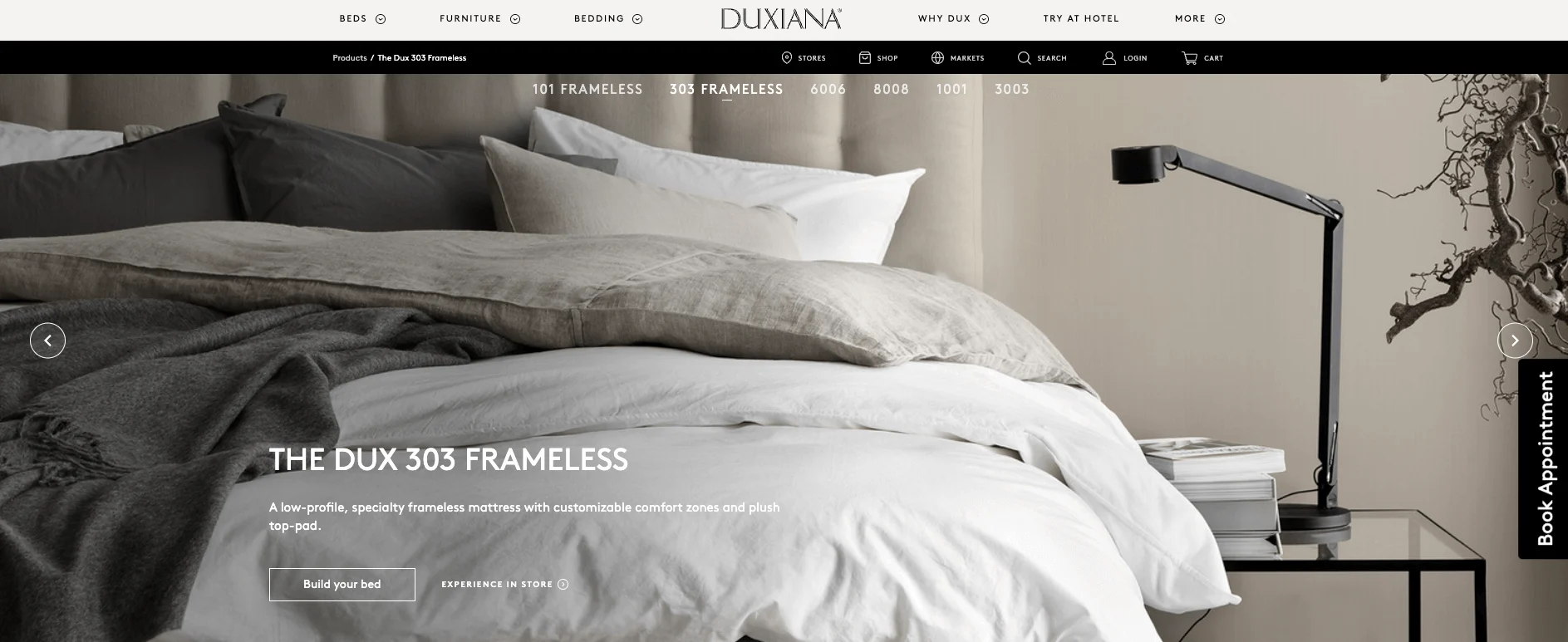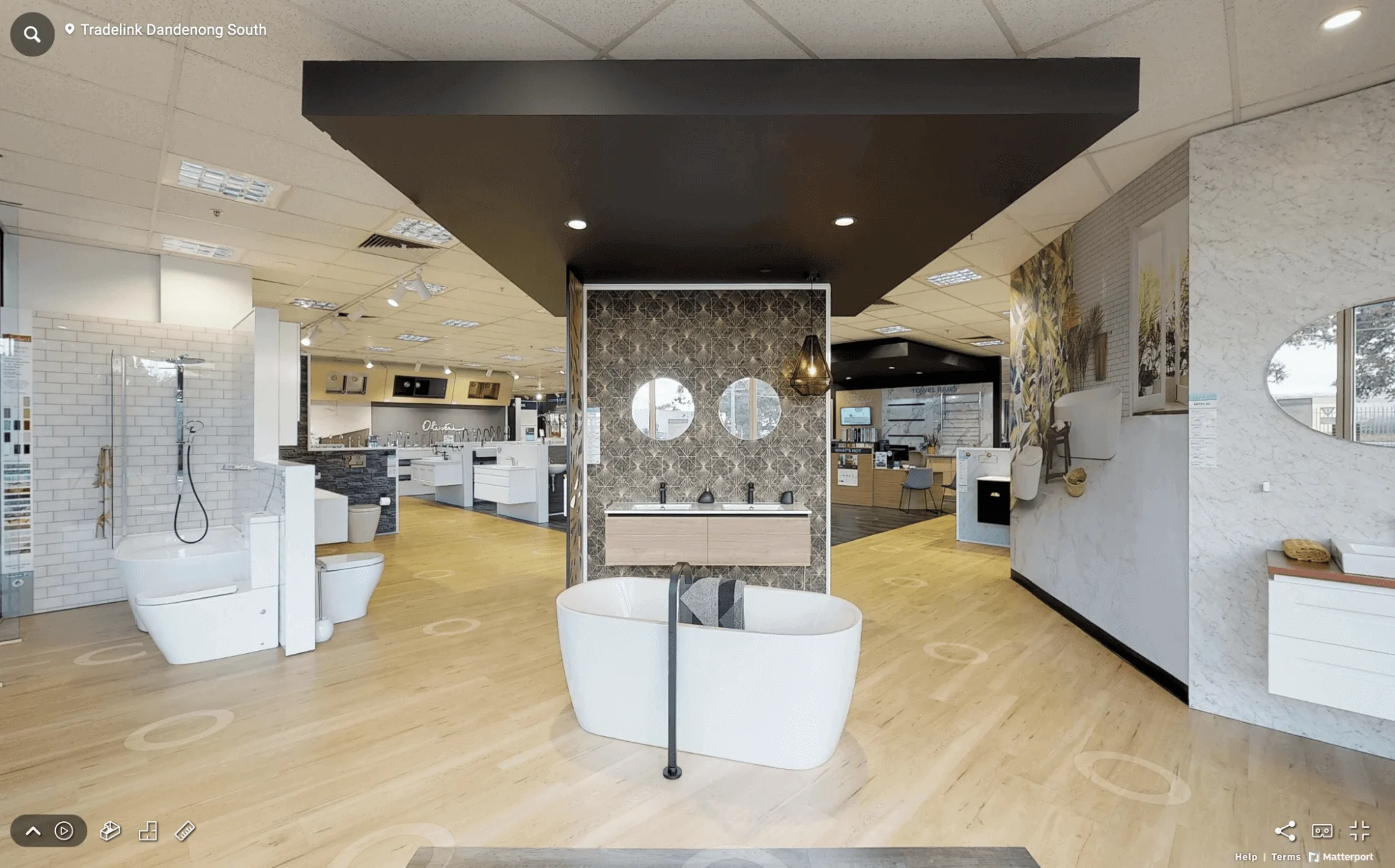Explore the
BigCommerce platform
Get a demo of our platform to see if we’re the right fit for your business.
Not ready for a demo? Start a free trial
Top 4 Home Furnishings Trends to Drive Ecommerce Growth

Written by
Annie Laukaitis

Top 4 Home Furnishings Trends to Drive Ecommerce Growth
Get The Print Version
Tired of scrolling? Download a PDF version for easier offline reading and sharing with coworkers.
A link to download the PDF will arrive in your inbox shortly.
In 2023, the home, garden, and furniture industry encountered its fair share of headwinds. Despite soaring inflation rates, a tough housing market, and massive layoffs, these brands and retailers ultimately came out resilient, ending the year on a positive note.
However, as the same obstacles persist with no end in sight, these businesses need to be more strategic than ever to generate sales and come out on the other side successful.
To help home furnishings brands find innovative ways to attract today’s consumers, BigCommerce recently hosted a webinar in partnership with Retail Dive — Driving Ecommerce Growth for Home, Garden, and Furniture Brands: 4 Trends for 2024.
This panel-style webinar featured ecommerce and furniture industry experts: Michael McBride, CEO and Founder of Atelier Commerce; Ed Curry, President of DUXIANA North America; and Fiona Norton, Senior Manager, Product Marketing at BigCommerce.
During this event, the panelists explored four major trends to help brands adapt to the modern shopping landscape, bring their products to life for consumers, and improve the customer experience.
1. Mimicking the in-store feel
Many home furnishings brands face challenges when it comes to generating online sales — especially those that sell big-ticket items, where comfort is the key driver behind the purchase.
To help shoppers feel comfortable making these purchases online, furniture brands need to build an online store that provides the same level of education and product visualization one would get shopping in-person.
During the webinar, Michael McBride discussed how Atelier Commerce and development agency Codal translated luxury mattress brand DUXIANA’s in-store shopping experience to its BigCommerce site. The answer was a headless build that allowed them to integrate top-tier technology to create a content-rich educational experience and a showroom-like feel.
“One of my favorite features is the ability to scroll between different beds. Instead of clicking in and out of pages, back and forth, you’re able to just swipe between them, much as though you were in a store looking from one product to the next,” explained McBride.

To further enhance the digital shopping experience, brands can integrate tools like AR, VR, and AI to offer preview placements, virtual showrooms, and personalized product recommendations. Tradelink is a BigCommerce brand offering interactive virtual showrooms that replicate its two brick-and-mortar stores. Customers can even connect a VR headset for a fully immersive shopping experience.

Virtual consultations are another effective way to translate the in-person experience to online, as it enables shoppers to have a one-on-one conversation with an in-store employee.
As a brand that aims to provide an unmatched experience to all consumers — whether they prefer shopping online or in-store — DUXIANA has incorporated several innovative features into its ecommerce site.
“Just last week, we added a chat function, which, to be honest, we were hesitant to do as a luxury brand, but it’s been a big hit,” explained Curry. “Our next addition will be virtual in-store appointments.”
Before optimizing its ecommerce store, DUXIANA faced the challenge of selling luxury mattresses online. Since building a world-class customer experience that mimics shopping at a traditional brick-and-mortar store, DUXIANA has been able to more effectively cater to its customers and grow its online business.
2. Taking a modernized approach to B2B
With more experiences taking place digitally, brands need to optimize their online presence from all angles. This is especially true when it comes to trade sales.
According to Gartner, 80% of B2B transactions will take place online versus traditional sales methods by 2025. If your home furnishings brand doesn’t offer a B2B customer journey as seamless as your B2C experience, it’s time to make some changes.
In our recent webinar, Fiona Norton explained how wholesale brands can build a top-tier experience to attract customers and turn them into loyal shoppers.
“One of the biggest things is to prioritize your B2B experience. We have so many home and furniture brands that do a lot of trade business, but they haven’t prioritized that experience online. The tools are there now to provide that consumer-like shopping experience online and really create a better experience for your B2B customers,” explained Norton.
To optimize the B2B shopping experience, brands need to make sure they host their store on a platform that offers robust B2B and B2C functionality. This includes:
Support for multiple payment options
Customer groups and native price listsEase of integration with existing systems, like an ERP, PIM, or POS
Multi-currency and multi-storefront
Composable commerce capabilities to drive a unique user experience
These tools give brands the flexibility to build as simple or complex an experience as they want. To most effectively create a modernized B2B customer journey, brands can partner with a skilled developer agency like Codal.
3. Building a frictionless omnichannel presence
Today, brands have endless opportunities to interact with potential customers. Taking advantage of these different touchpoints to build a frictionless omnichannel experience can help you cater to a larger pool of shoppers, leading to more online sales.
Specifically within the home furnishings industry, Buy Online, Pick Up in Store (BOPIS) has become increasingly popular. Offering curbside pick-up may be the deciding factor in a shopper’s decision to finalize a purchase.
“Customers want to save on shipping costs for heavy items. If they’re able to buy online and then have that item ready to pick up at the store, that creates a really good experience. Often, they’ll also want to go in-store and grab something as well, so we see that helps their business online and offline,” explained Norton.
However, omnichannel goes far beyond blending in-store and online shopping. Having an established and active presence on social media platforms and online marketplaces can also help increase your brand awareness and lead to more sales. To seamlessly manage these different selling feeds, brands can take advantage of omnichannel tools like Feedonomics.
4. Creating comfort with flexible payment options and reviews
Given today’s economic climate, many consumers are shifting toward saving rather than spending — especially on home goods.
To help shoppers feel more comfortable buying these products, brands should offer flexible payment options, like Buy Now, Pay Later. This can alleviate anxieties, especially when purchasing big-ticket items, leaving shoppers more likely to purchase from your store.
Another way to secure sales is by helping consumers feel comfortable with your products. One of the most effective ways to do this is through user-generated content, where consumers review your products.
Encouraging shoppers to leave reviews on your online store and social media can help customers feel more confident buying your products — leading to increased transactions.
“It helps to see the product in a real-life setting through customer reviews and user-generated content. We’ve seen that when brands prioritize getting photos of how customers have styled the item in their home, it makes shoppers more comfortable visualizing how the item could look in their own space,” explained Norton.
Start Growing with BigCommerce
Check out our Home and Garden Solutions page to see how you can take your business to the next level with BigCommerce.
The final word
With the home, garden, and furniture industry facing major headwinds, integrating different strategies designed to attract consumers is more important than ever.
Offering a showroom-like feel that mimics the traditional in-store journey, a modern B2B customer experience, an omnichannel presence, flexible payment options, and product reviews can help you stay resilient and generate sales in today’s economic climate.
Watch our Driving Ecommerce Growth for Home, Garden, and Furniture Brands: 4 Trends for 2024 webinar for a deeper look into strategies businesses can take to set themselves up for success.


